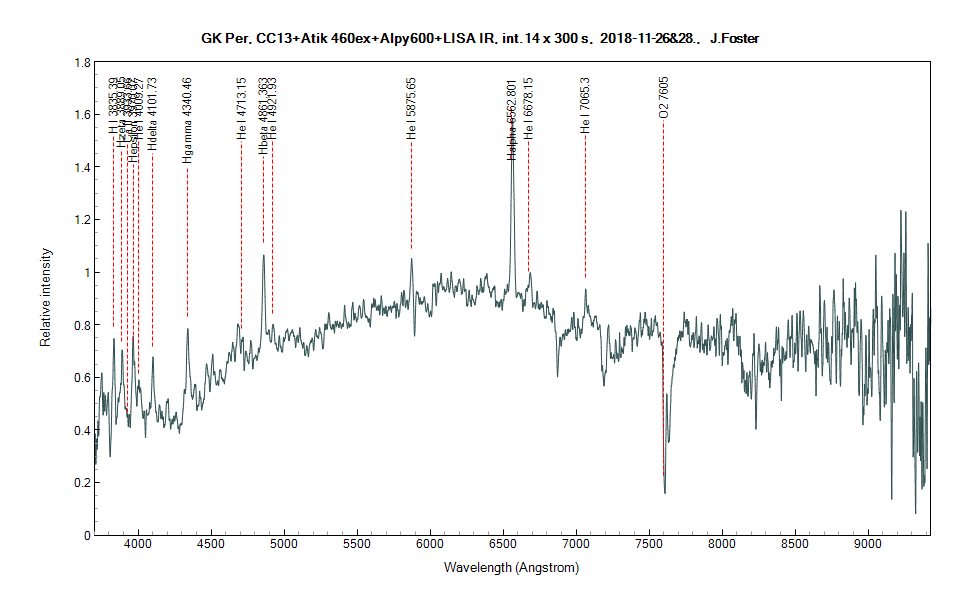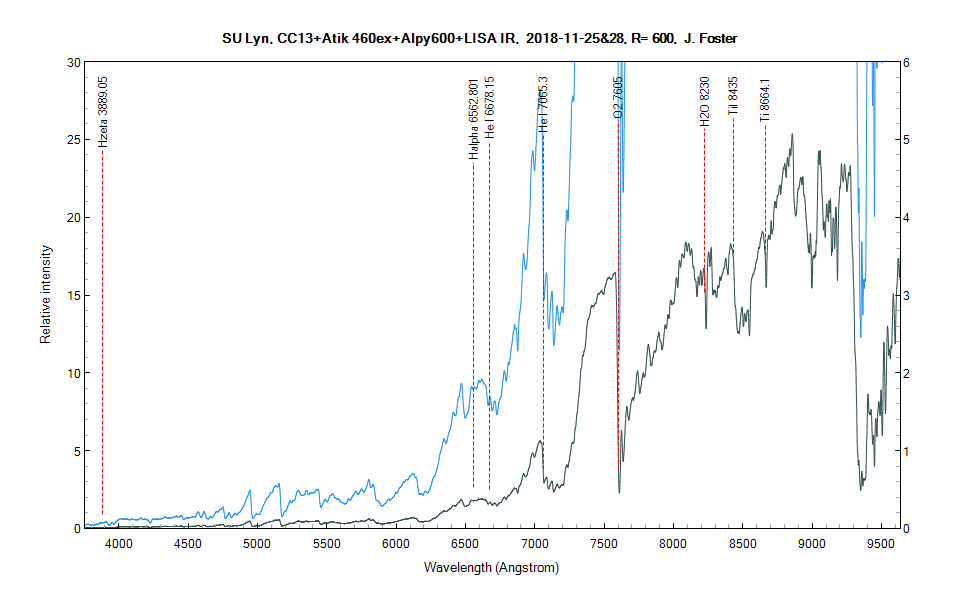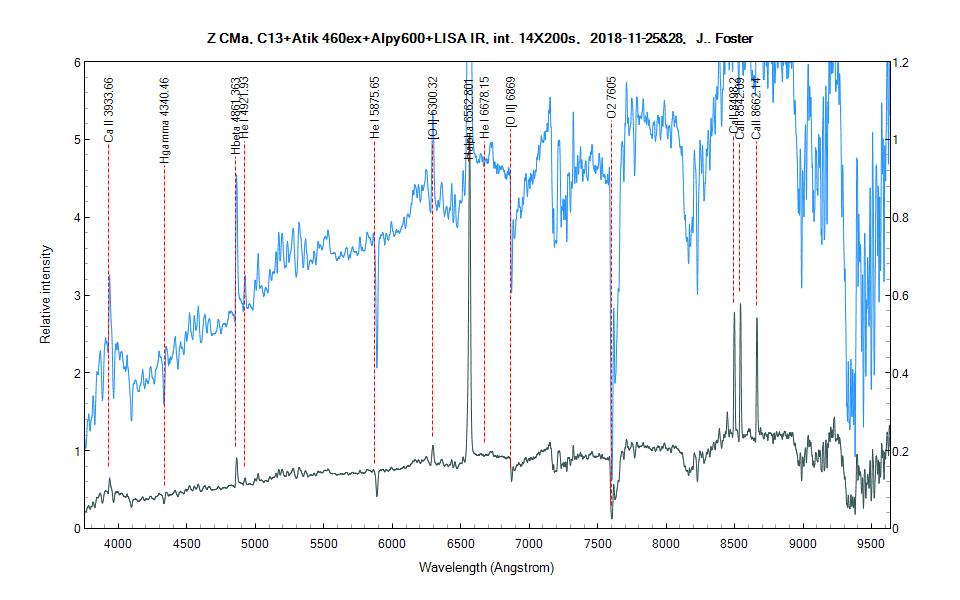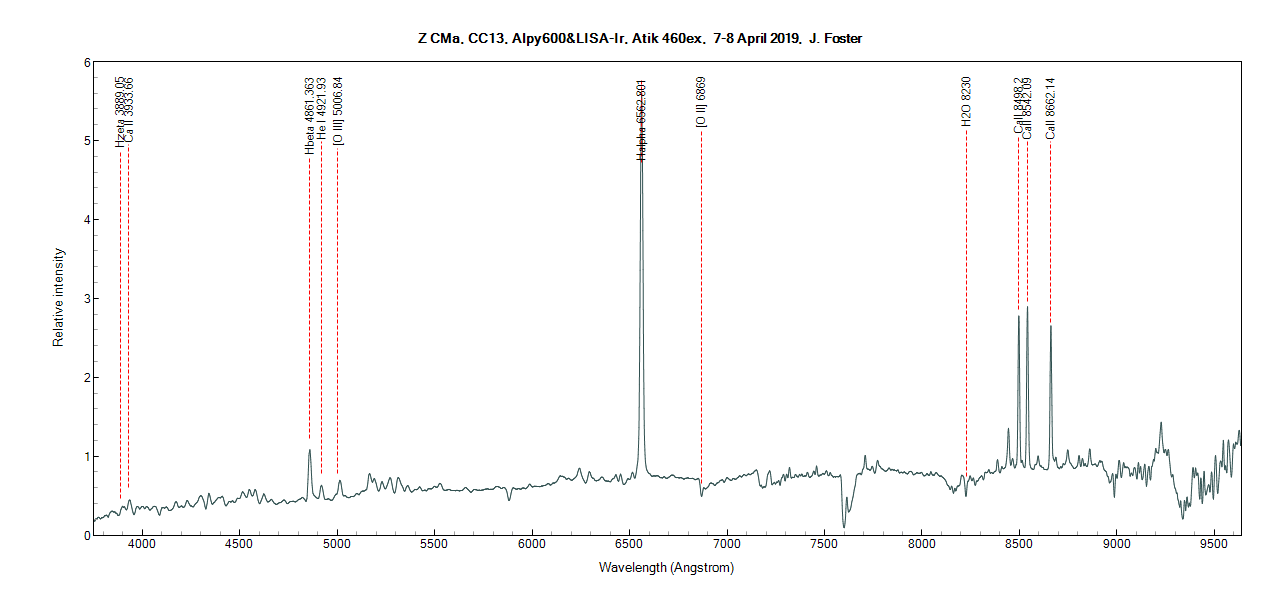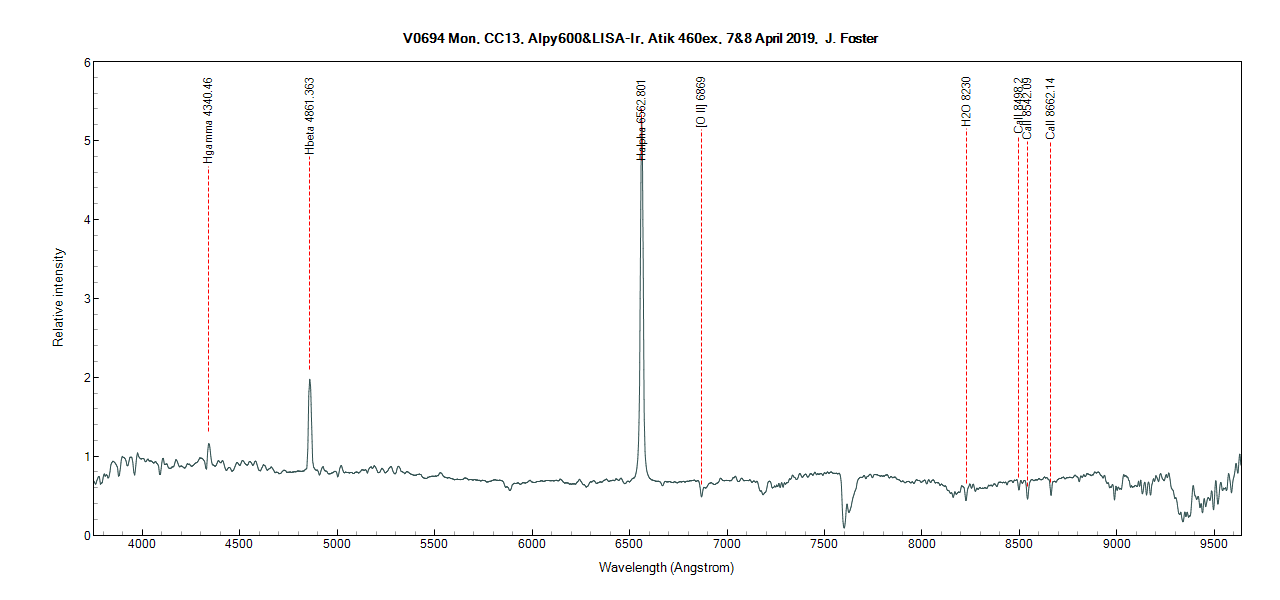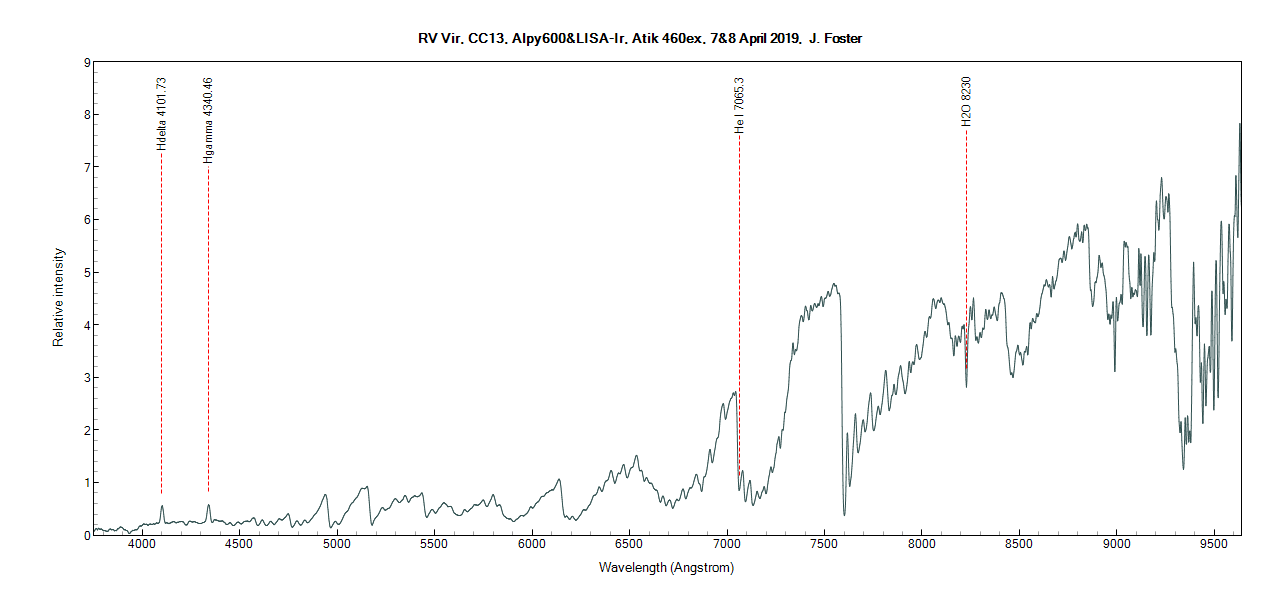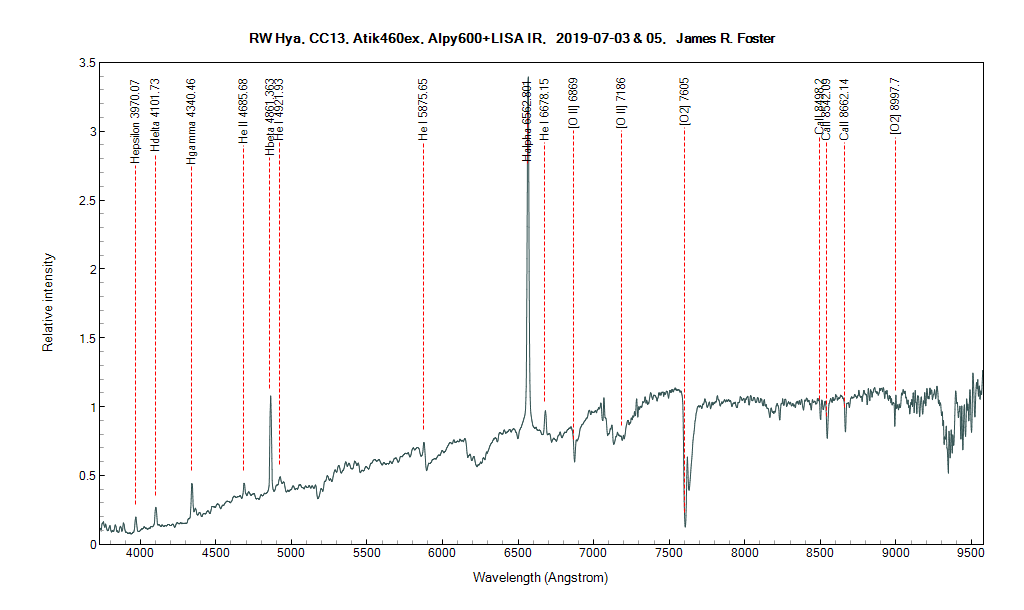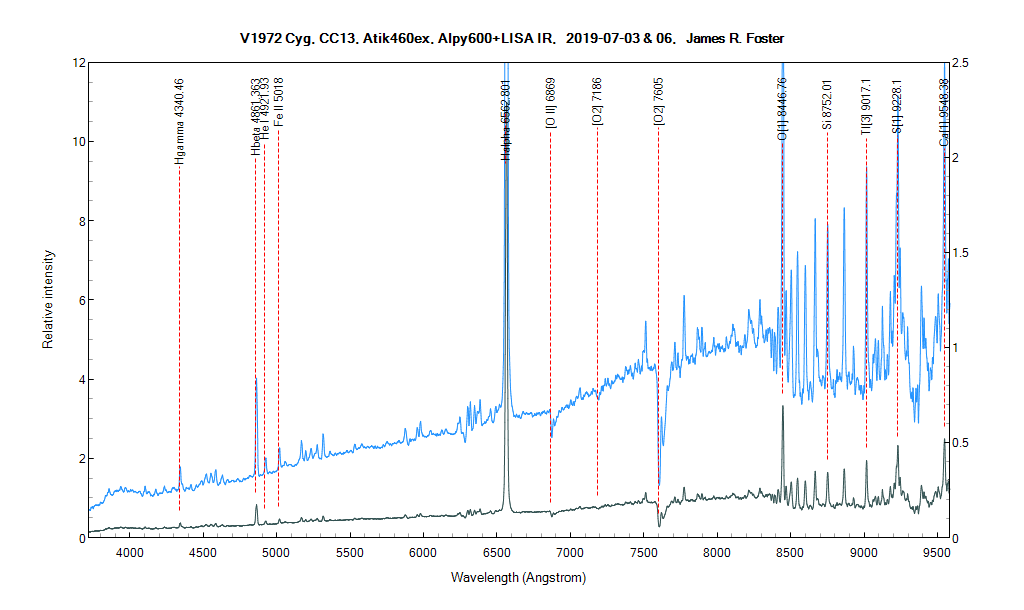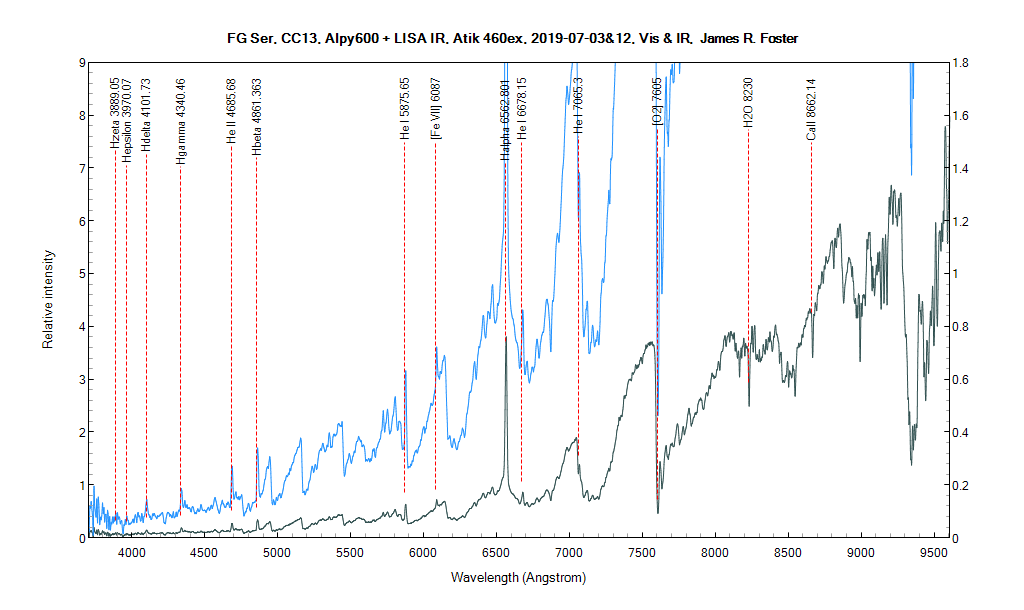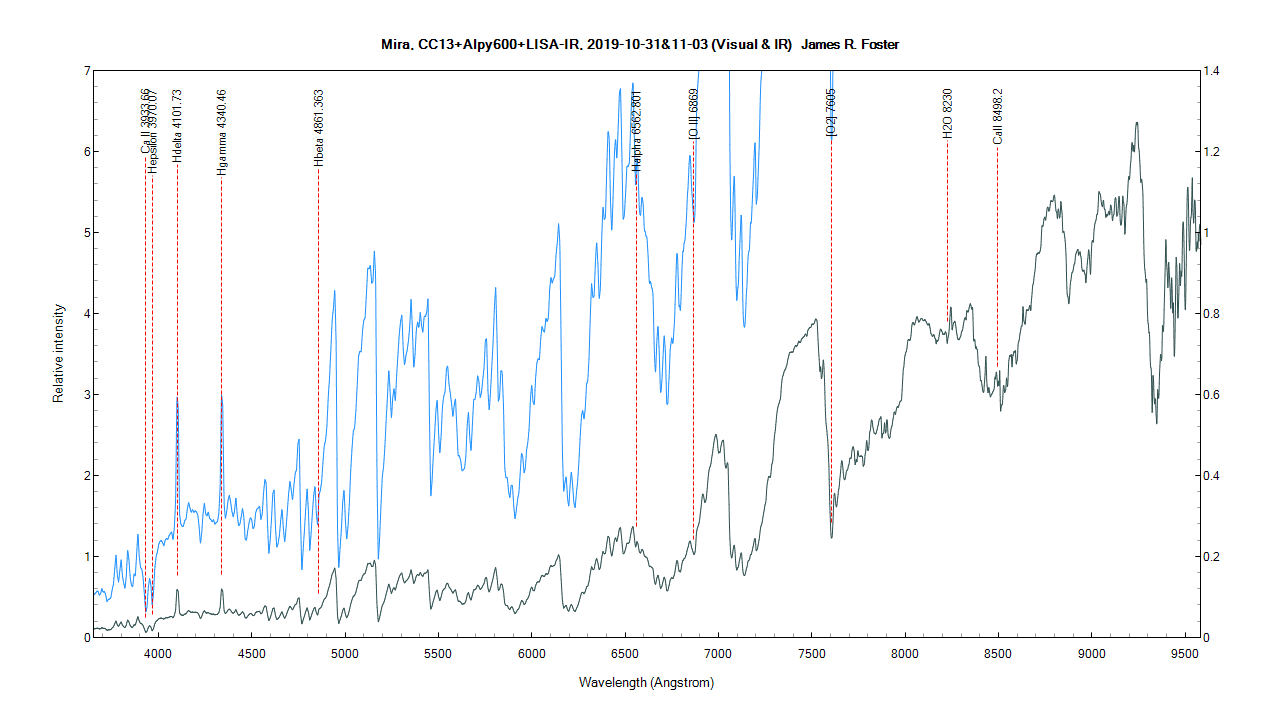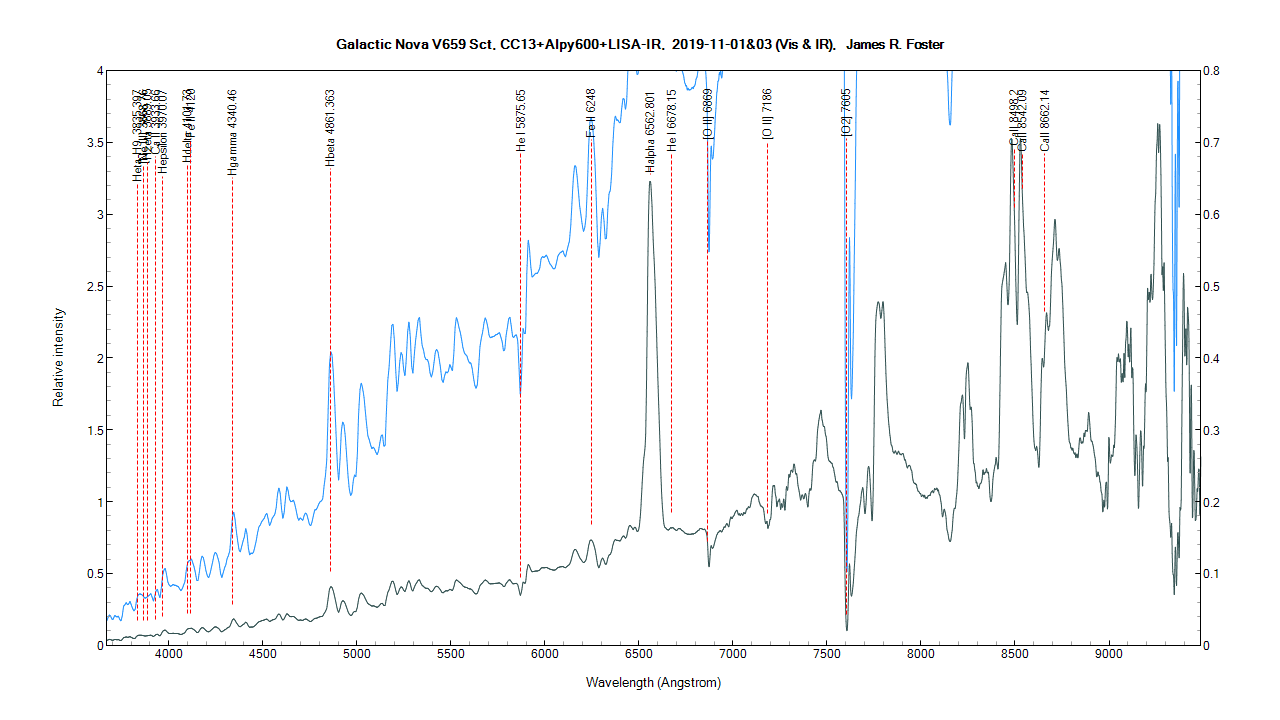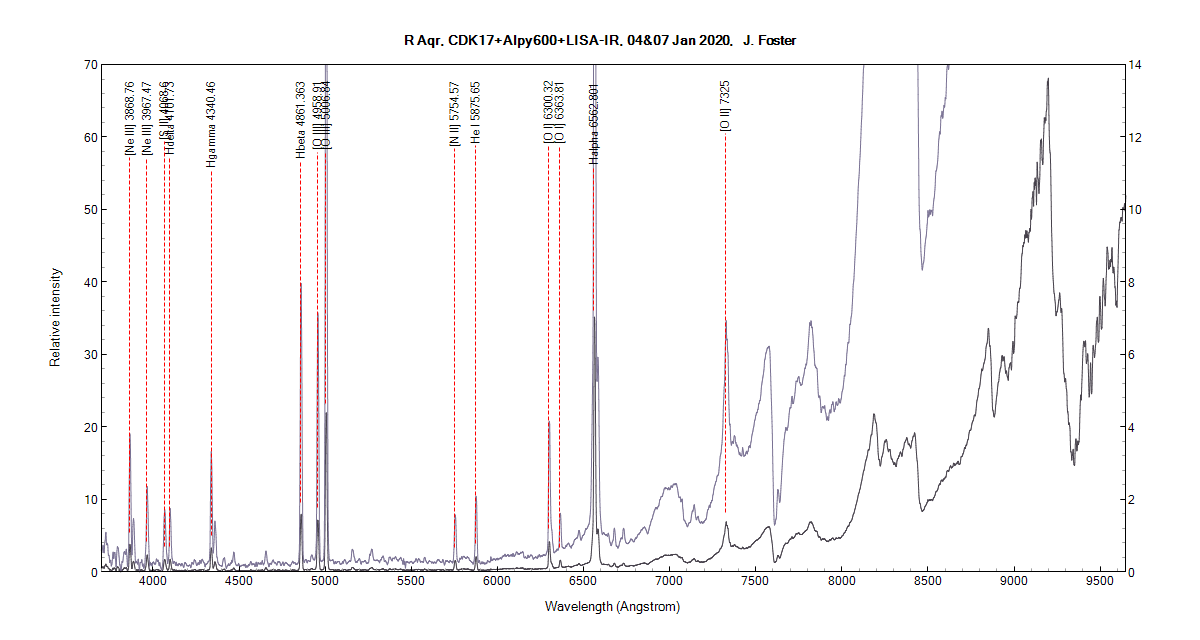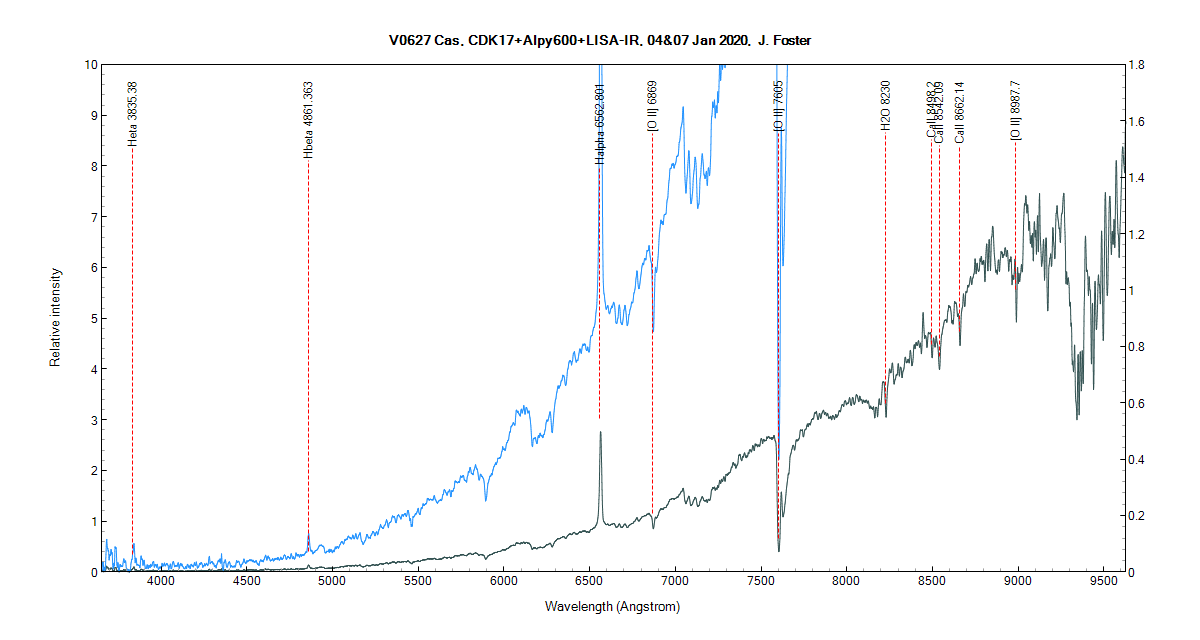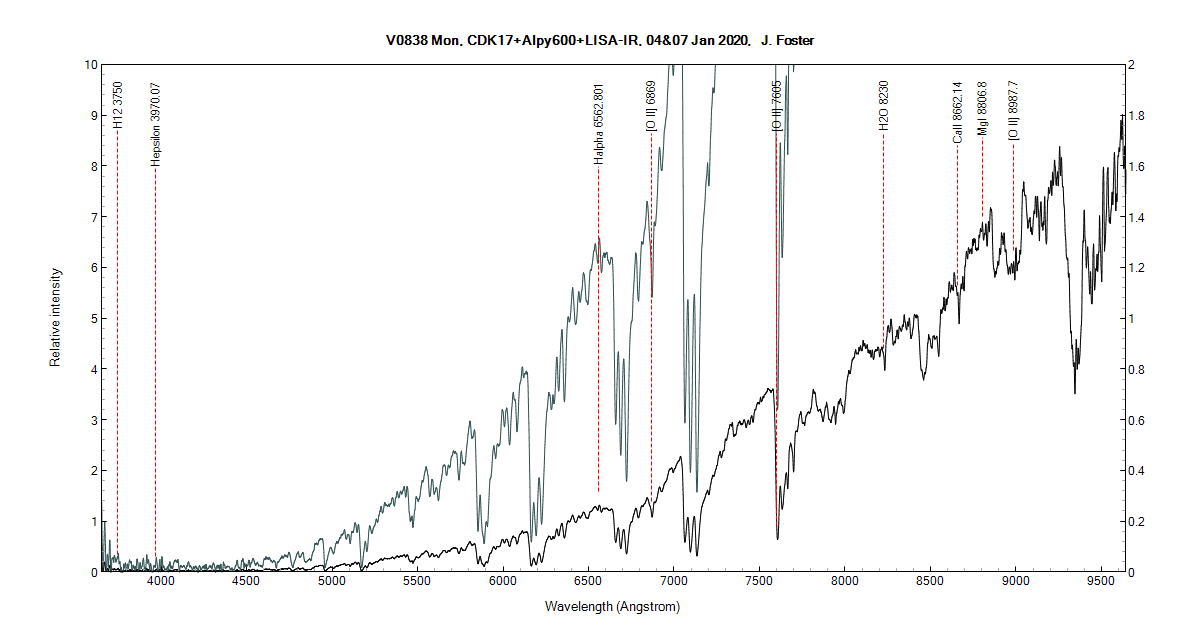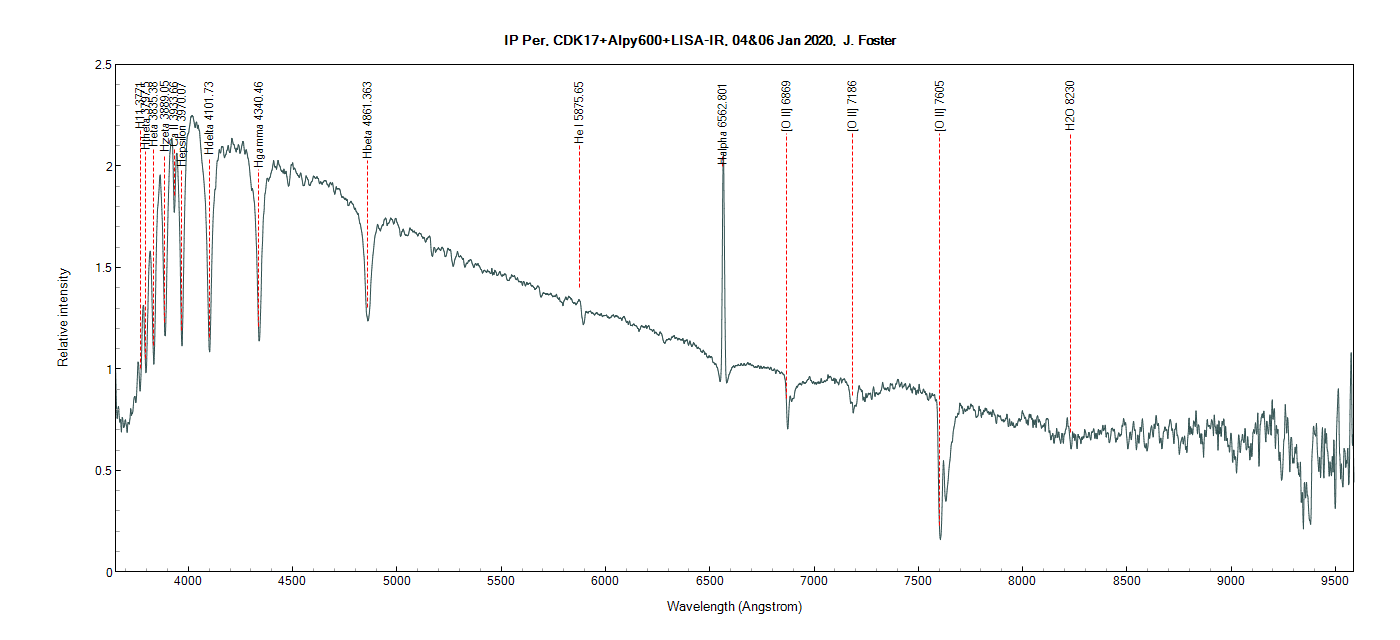To: Olivier,
RE:"Did you have any problem setting the LISA in near IR mode ?"
Not exactly. Everything in the LISA manual enabled me to re-configure to IR mode. However, its not for the faint-of-heart, the visual grating must be replaced with the
IR grating and this involves the almost complete disassembly of the LISA. Tuning the continuum onto the center of the CCD FOV is about the same as visual mode.
One thing missing that would have been helpful, there is no Ne/Ar line identification in this spectral range in the LISA manual. Shelyak was kind enough to send me
a graphic file for this; although the line appearance from this file varied from mine, I was able to figure the proper lines.
Here is what my Ne-Ar line calibration looks like in the IR mode (image contrast enhanced to show faint lines, typical exposure 8 sec 2x2 bin) :

Here is the text for my "filemode" when processing LISA spectra in IR mode:
2
3.602
6965.431
7067.218
7272.936
7383.98
7723.761
7948.176
8266.077
I understand that LISA is higher resolution than the Alpy600 (1000 vs 600) , but I'm hesitant to reconfigure the LISA back to visual mode for the meticulous adjustments
necessary and the Alpy600 still has slightly better resolution towards the UV end. As Christian pointed out earlier to me, it would be nice to have 2 LISA's one for
visual and one for IR.
This region, 7400-9600A, is ideal to see the majority of spectral energy for any stars cooler than K class. T Tau and FU Ori type stars have lots of interesting emissions
in this realm and planetary bodies have interesting CH4 and other lines in this region as well, so its worth the effort to reconfigure.
Nice meeting you at the Spectral workshop in New Mexico a few weeks ago!
James
